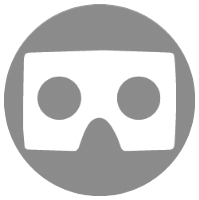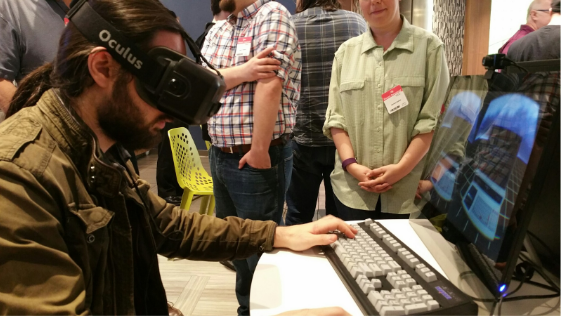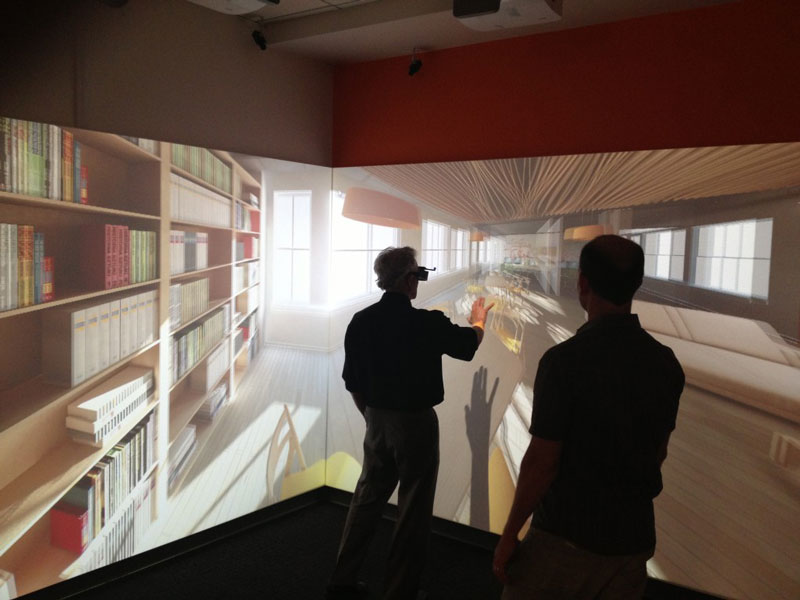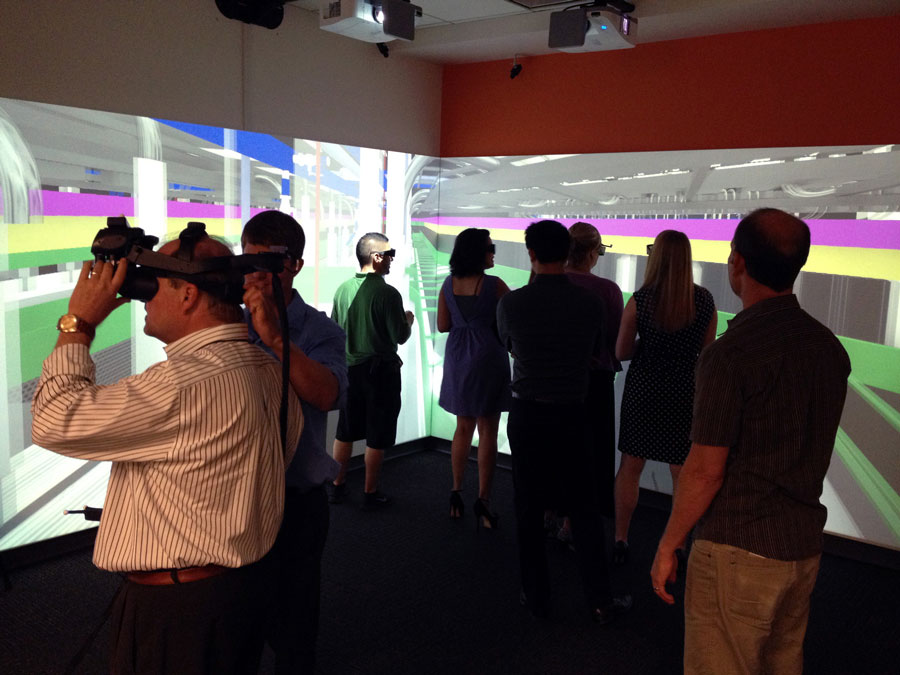


Virtual Reality (VR) – the next frontier for architectural visualization. With the releases of the Oculus Rift and HTC Vive, interaction with virtual environments has never been as immersive as before. Google Cardboard and Samsung Gear VR have made these tools more ubiquitous and accessible. Audiences can get more hands-on and into their projects with less effort as new technologies become part of an integrated work flow. For designers, VR will revolutionize presentations and productivity.
 Yildirim Yazganarikan at a DCVR demo exposé
Yildirim Yazganarikan at a DCVR demo exposé
IMMERSION
Since the beginning of the Internet Age, we are dwelling in physical and virtual spaces simultaneously. Where we may be lounging at home or working in the office, our digital tools allow us to influence our consciousness – whether that be performance-enhancing or distracting. Steven Kotler, a Forbes contributor, calls this flow. Such a state of immersion captivates users and greatly enhances their experiences as they dive deeper into the virtual reality.
The most prevalent examples of this immersion can be seen coming from the entertainment and gaming industries.
MARKETING TOOL
A number of viral videos have cropped up recording users subjected to full immersion as depicted above. Looking toward the architectural applications, a number of firms have embraced VR to augment to their arsenal of visualizations. A number of firms have already begun using those tools to give an edge in the architecture and design decisions that clients need to be a part of. Most notably, a number of Maryland officials broke ground in virtual reality for the new Brendan Iribe Center for Computer Science and Innovation at the University of Maryland.
PRODUCTIVITY PLATFORM
Renderings and animations already paint captivating narratives and portraits of our designs. The next step is to allow users and stakeholders to curate their own experience, as well as make more informed design decisions. Moreover, the same processes used to create 3D visualizations can be made interoperable to interchange between CAD, BIM, and VR environments. When CAD was the only option, design practice flowed linearly as a means of design to documentation. The advent of BIM promoted more cyclical processes that allowed for checks and collision detection for a more thorough design. With VR, the products of CAD/BIM can be visualized and experienced, rather than worked on.
Developments to translating CAD/BIM to VR are slowly accelerating as a greater number of third party VR-startups solve software translation issues. Products like 3DS Max and Revit have begun incorporated stereoscopic rendering into their clouds and farms, but these only offer limited experiences compared to other methods available.
 Virtual Reality showroom by WorldViz
Virtual Reality showroom by WorldViz
Looking to the advancements in both software and hardware, virtual reality will become a more integrated tool to bring our ideas to actuality.

